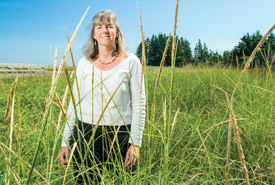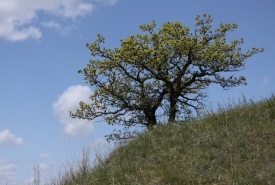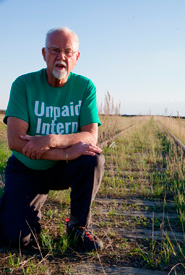Covering a lot of ground...and water: Review of NCC Magazine's spring issue

Danielle Robertson, Port Joli, NS (Photo by Aaron McKenzie Fraser)
While reading the spring 2017 issue of the Nature Conservancy of Canada Magazine, I was reminded of the late former Prime Minister (1921-26) Mackenzie King’s observation that, “If some countries have too much history, Canada has too much geography.”
Reading about coastal conservation on Nova Scotia’s South Shore seems a world away from a Saskatchewan flatlander’s concerns about protecting native prairie and biodiversity. And yet, the feature story, “Coastal Roots” follows a familiar theme: local people with deep roots in their communities recognizing the threats to the natural environment around them, and taking action to help protect it. It’s a theme, I believe, that is repeated across Canada’s remarkably diverse landscapes. The story of how the Nature Conservancy of Canada (NCC) is working with these local champions in Nova Scotia is an optimistic one.
A related article explains how NCC is working on Canada’s Atlantic and Pacific coasts to protect eel-grass habitat. Eel-grass differs from seaweed, and provides several environmental benefits in shallow bays, coves and estuaries. However, it is susceptible to human interference, and in some places is being threatened by an invasive species, the European green crab. Having worked as a Conservation Volunteer uprooting invasive species from prairie soil, this is a reminder that invasive species come in many shapes, forms and colours.

Bur oak with mixed-grass prairie on the Yellow Quill Prairie, MB (Photo by NCC)
Other items in the issue include some suggestions for small acts of conservation, a profile of NCC’s Yellow Quill Prairie Preserve in southern Manitoba and the story of the Ivey family’s dedication to protecting land in Ontario's Niagara Escarpment area. In the latest “Backpack Essentials,” Caitlyn Piton, chair of the Scouts Canada National Youth Network, explains why she always carries beef jerky, a water filter, loose-leaf tea, first aid kit and knife in her backpack.
The inside back page contains a short version of an uplifting yarn by esteemed storyteller Stuart McLean, about a land donation from a couple who lived on 320 acres (130 hectares) of wooded wilderness near Edmonton for 30 years. When they realized their little chunk of paradise might be threatened by future development, they approached NCC and worked out an arrangement to protect it for the long term.
Finally, the back cover features “Your Voices” — observations on the experiences of three people who have worked with NCC as Conservation Volunteers.
The magazine is distributed quarterly to people who donate to NCC. I look forward to it arriving in my mailbox; it is always a learning experience and a source of optimism. In case you are wondering, the paper is made using Ecologo processes and biogas energy. These processes saved 29 trees and 104,000 litres of water in the last issue, according to the magazine masthead. I figure that’s worth the read.


